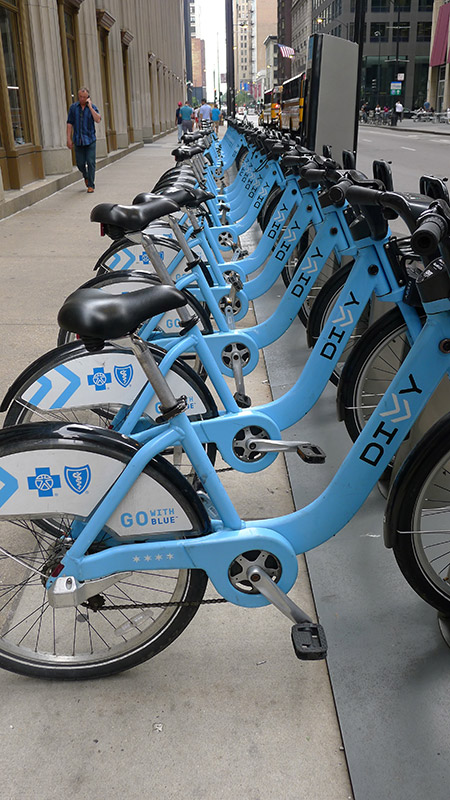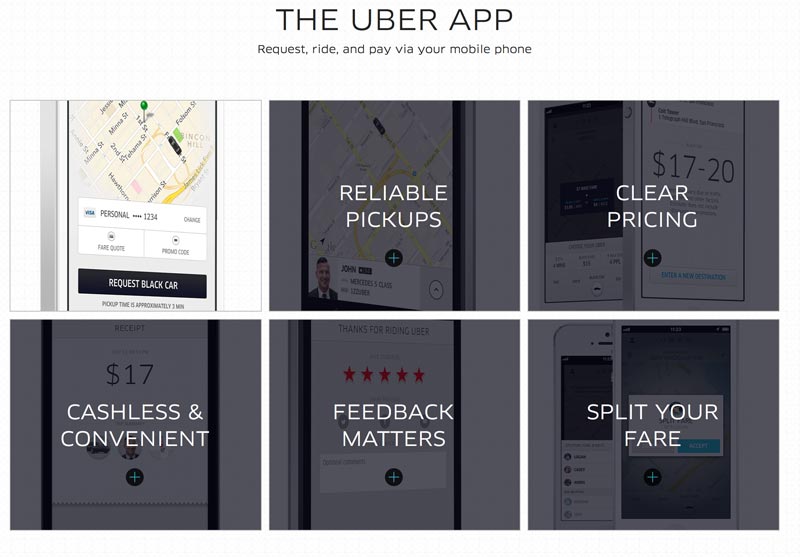A firm's go-to-market strategy is the mechanism by which they propose to deliver their unique value proposition, a new product or service, to their target market. A value proposition based on the choices the business has made on where to focus its investments and what markets and solutions they believe will respond positively to increased attention.
A go-to-market strategy (GTM strategy) is an action plan that specifies how a company will reach customers and achieve competitive advantage. The purpose of a GTM strategy is to provide a blueprint for delivering a product or service to the end customer, taking into account such factors as pricing and distribution. A GTM strategy is somewhat similar to a business plan, although the latter is broader in scope and considers such factors as funding.
The phrase “value proposition” is credited to Michael Lanning and Edward Michaels, who first used the term in a 1988 staff paper for the consulting firm McKinsey and Co. In the paper, which was entitled “A business is a value delivery system,” the authors define value proposition as a clear, simple statement of the benefits, both tangible and intangible, that the company will provide, along with the approximate price it will charge each customer segment for those benefits.
A value proposition, which is an essential element of an elevator pitch, should be simple and easy to remember. It should emphasize both the benefits the customer will receive and the price the customer will pay as compared to the benefits provided by the competition. An essential goal of a value proposition is to convince the customer that he or she will be getting many more benefits than they were asked to pay.
To create a compelling value proposition, an organization should first determine exactly what benefits a customer wants and how much the customer is willing to pay for them.
The next step is to achieve product-market fit with the value proposition you have created. Product-market fit has always been a reasonably abstract concept making it difficult to know when you have achieved it. Yet many entrepreneurs have highlighted the importance of creating a product that resonates with the target market. The mantra at Paul Graham’s successful startup incubator Y Combinator is “make things people want.”
How do you ensure that you have things people want? Ask existing users of a product how they would feel if they could no longer use the product. In my experience, achieving product/market fit requires at least 40% of users saying they would be “very disappointed” without your product. Admittedly this threshold is a bit arbitrary, but I defined it after comparing results across nearly 100 startups. Those that struggle for traction are always under 40%, while most that gain strong traction exceed 40%. Of course, progressing beyond “early traction” requires that these users represent a large enough target market to build an exciting business.
Growth hacking is a process of rapid experimentation across marketing channels and product development to identify the most effective, efficient ways to grow a business. Growth hackers are marketers, engineers, and product managers that specifically focus on building and engaging the user base of a business.
In the world of virtual products, Growth hackers are famous for helping promote ideas to achieve rapid growth. Ryan Holiday's book Growth Hacker Marketing describes the methods used by growth hackers. One of his suggestions from his book is an example of growth at Hotmail, a company purchased by Microsoft. Hotmail added, “P.S I love you. Get your free e-mail at Hotmail” at the bottom of e-mail sent using their service. This statement turned all users of Hotmail into an advertiser for the product. An idea adopted by Apple for their iPhone mail that includes “Sent from my iPhone” at the bottom.
Growth hackers believe that products can and should be continously developed until they are ready to create explosive growth reactions from the first people who first see them. A recent example is the Pokemon Go App using Augmented Reality (AR) technology. Another current example is Airbnb, a company that has modified its product offering several times. Silicon Valley companies are famous for iterating until they achieve product-market fit. A desirable development method but made difficult when the product is physical and the investment substantial.
Read several growth hacker business cases here: Growth Hackers
Today's goto market strategy has to be “omni-channel”
which represents a significant shift from the past. Marketers now need to provide a seamless experience, regardless of channel or device. Consumers can now engage with a company in a physical store, on an online website or mobile app, through a catalog, or through social media. They can access products and services by calling a company, by using an app on their mobile smartphone or with a tablet, a laptop, or a desktop computer. Each piece of the consumer’s experience should be consistent and complementary.
Omni-channel, ‘cross channel being done well’ — a continuous experience across brands, across format and across devices that is completely made to order.
The Five C's
The five C's are used to analyze five critical areas involved in strategic marketing decisions for a company and include Company, Customers, Competitors, Collaborators, and Climate. The 5 C’s are an excellant guideline to make the right decision, and construct a well-defined marketing plan and strategy. The five C's can be thought of as constraints. Customers come first as we need to understand their needs. We need to understand our point of differentiation, and our point of advantage over competitors. We must think about our own company and consider what internal resources we have in terms of delivering superior products and services to existing customers. What is our brand strengths and weaknesses? It is critical to develop collaborators as they may serve as partners that we may need to facilitate our access to a market. Finally, context, an idea that is inclusive of what transpires in the macro environment including, age, population, new innovations in technology, and concerns about the planet were we live.
For the marketing executive or team, the four P's serve as parameters that can be changed or manipulated. The four P's product, price, promotion, and place are the tools used in the STP strategy. An STP strategy is defined as segmentation, targeting, and positioning and will be explored in Chapter Fourteen. These strategies provide the link between the environment, the five C's, and the parameters (the four P's that you implement). The product is quickly becoming more important than the other three parameters. The product should be considered first as it has never been easier to develop a new business. This holds true whether it's a business revolving around content and information or one that includes physical goods and services. Due to this shift, it is imperative the product must deliver exceptional value. It should be a product that could appeal to a large market and one that is very easy to explain and describe.
Billions of people worldwide carry a smartphone in their pocket. The marketer can show an exciting product, service or solution to a problem on the phone. Therefore, your product should be easy to explain and describe. When contemplating execution, we should consider the question: what is wrong with the status quo? Consider how daily activities like buying groceries, ordering taxis, booking hotels, interacting with friends, and family can be improved. How can the customer's job to be done be accomplished in a new and exciting way?
The pop-up store has become a marketing strategy for retailers looking to extend the brand and introduce new products. There are various benefits to pop-ups, such as testing products, locations, or markets, and as an inexpensive way to start a business. They are a low-cost method to determine product-market fit. Pop-up shops are developed in a variety of shapes and sizes, as well as locations. They can be found in a traditional brick-and-mortar store — as a store-within-a-store — as a standalone kiosk.
Howard Schultz, the founder of Starbucks, used serendipity to change his frame of reference and grow his coffee business into what we now know as Starbucks.
Mr. Schultz noticed that people in the United States were acquiring their coffee in the supermarket and consuming it at home. Still, others would pick up a cup of coffee at a gas station, and most of the time, it did not taste terrific. In short, it was just merely a product without much peripheral experience or service to go with it.
On a trip to Europe, Schultz discovered when folks there drank coffee, they did so with friends, drank higher ends of coffee, and were familiar with macchiatos and lattes. For many Europeans, coffee was an experience, more than merely a product with some niceties wrapped around it. When Schultz returned to the United States, he envisioned Starbucks would be known as the third place. The first place is home, the workplace is second, and Schultz's idea of Starbucks as the third place. The place to go and experience all of your troubles floating away on a steamy latte. This is an excellent example of someone who saw what was wrong with the status quo and improved it.
Five changes within the sea of contextual change affect the start-up and development of new business. One major contextual trend that is difficult to stop but can be leveraged is called democratization in access. Here, technology scale and low-cost allow people to access things they may not have been able to before. A prime example of this is Coursera, where thousands can enroll in an online class and interact together because of technology. Previously, taking a class mandated being physically present in a specific classroom or school. Today, technology provides this opportunity, and Coursera is just one example to consider.
The next significant trend that is occurring, in part due to the internet, is value chain disruption. Markets, where the price that's paid by the end consumer is very high relative to the cost, is an example of an opportunity for value chain disruption. Perhaps a monopoly has the market locked up or there's some kind of structural impediment that results in consumers getting a raw deal. Dropbox with tiered pricing starting with free replaced the need for memory sticks or USB memory which had replaced floppy disks.
One company that disrupted a value chain is Harry's. Harry's ships men's razors, cream, and shaving foam directly to a customer’s house. This company was created on the premise that there are some competitors out there that offer a very good shave, but at an extremely high price. Gillette may respect your face and give you a nice shave, but it doesn't really respect your wallet. In the United States, one of their shaving cartridges may cost $10. Harry's is both considerate of your wallet as the product is generally affordable and considerate of your face by providing a good shave. Harry’s paid $100 million to purchase Feintechnik, a company and factory that has been manufacturing razor blades since 1920 and the source of Harry’s shaving products. For more on the disruption of the razor business read Don't Get Dollar Shave Clubbed

The third trend is called collaborative consumption. Where there is an oversupply of products and their categories , there is an opportunity to share. If you own a car, there is a strong possibility that the car is inactive for most of the hours in a day resulting in a real waste of that resource. Wouldn't it be more practical if there were just one or two cars per apartment building, and there was some efficient way of sharing those cars? This is the idea behind a company called Zipcar. Similarly, bicycle-sharing available in Paris, New York City, Chicago, and other places is an example of the same kind of efficient use of resources. The third trend is this concept that assets can be shared and consumed collaboratively.
The fourth trend, primarily facilitated by the use of technology, especially mobile technology, is the matching of supply and demand. Think about going out at night with a group of friends and trying to locate a taxicab, particularly in a less populated area of the city. This can be rather challenging. However, in many cities, there are drivers available just waiting for passengers. One way to match that supply and demand is to create a ride for the person who needs to get home and create the payment for the driver, who would stand to benefit from that excess demand. One company that has discovered how to match that supply and demand is Uber.
The fifth trend is the use of Algorithms. Algorithms don’t notice (nor do they care about) branding efforts, celebrity endorsements, or publicity campaigns — and there’s a very real possibility they’ll soon sit squarely between an organization and its customers. This poses a potential problem for consumer packaged goods and retailers. If there is no longer a physical place where a brand might exist and come to life for consumers, how will brands connect with shoppers?
Consider these five key trends in terms of executing new businesses using innovative thinking.
Often, we are tempted to create friction, barriers, and turnstiles. We try to limit access, require a login, charge a fee. Sometimes, that's because we want control; other times, we believe we can accomplish more by collecting money. People value the moments that they spend at Disney World--with hundreds of dollars on the line and just a few hours to spend, there's an urgency and the feeling of an event occurring. Visit Disney World Tickets FAQ and imagine the friction facing a family of four on their first visit to the Magic Kingdom.
On the other hand, far more people look at the moon, you can go outside and look up in the sky for free. If your goal is to be present everywhere, significant friction is probably not your finest tactic.
There used to be very few resources that were truly scalable at no cost, resources where we didn't need to use money or queues to limit who would use them. In the digital world, that number keeps skyrocketing. It doesn't cost a cent to allow one more person to read this book.
If you're going to add friction, if you're going to create urgency and scarcity, understand that it always comes at a cost. By all means, we need to figure out how to make a living from the work we do. But with scalable goods, particularly those that have substitutes, don't add friction unless there are enough benefits to make it worth it to hassle the customers.
Ben Thompson points out that some services or products that are friction free provide value by supplying awareness to a more profitable product. “given the fact that the single most important attribute of any social network is the number of users on said network, any sort of for-pay model is a bad idea. It's not simply the fact that many people aren't willing to pay even $1, but also the inherent friction involved in any sort of payment. As WhatsApp founder Jan Koum noted, this point is especially acute for WhatsApp given its strong penetration in developing countries where many people don't have credit cards. ”
Facebook purchased WhatsApp for 19 Billion dollars. What made WhatsApp so valuable? The opportunity to promote to a vast number of people and the law of large numbers. According to the law, the average of the results obtained from a large number of trials should be close to the expected value and will tend to become closer as more experiments are performed. This allowed Facebook to make very accurate predictions!
Visit this discussion Medium - invisible-user-experience to learn how great companies design the customer experience to be friction- free.

